For the majority of their 104-year history, Sassuolo were relative minnows of Italian football.
They earned their first-ever promotion to Serie B in 2007/08, when one Massimiliano Allegri — who’d, of course, go on to reach great heights with both AC Milan (winning Serie A in 2010/11) and Juventus (winning Serie A in 2014/15, 2015/16, 2016/17, 2017/18 and 2018/19 as well as twice finishing as runner-up in the UEFA Champions League — doing so in 2014/15 and 2016/17) at the helm.
Sassuolo went on to achieve a historic promotion to the top flight for the first time in their history in 2012/13 when they won the Serie B title under the management of Eusebio Di Francesco; they’d go on to remain in Serie A from 2013/14 until 2023/24 — this past campaign, when they finally dropped out of Italy’s elite and leaves them where we find them today, preparing for another season in Italy’s second-tier, hoping to bounce straight back to the big time.
One figure who played a key role in much of the last two decades for Sassuolo — by far the two most successful decades of the club’s history — is Giovanni Rossi.
A journeyman attacker who primarily spent his playing career in Italy’s third and fourth tiers, Rossi took up his first post-playing role as a member of Sassuolo’s supervisory board in 2006 — a role which he’d occupy until 2010 when he departed for Juventus to become La Vecchia Signora’s ‘Director of Youth Development’ for three years.
Following that spell in Turin, Rossi returned to Sassuolo, where he occupied the role of ‘Sporting Director from 2013 until just last month, barring a one-year break for the 2017/18 season when Rossi left for the same role at Cagliari.
Reports emerged from Italy earlier this summer that Rossi’s former colleague, Allegri, now in his second spell as Juve boss, “felt betrayed” when his club opted not to appoint Rossi as their new Sporting Director, with the 56-year-old seemingly keen on linking back up with the man with whom he shared excellent memories of Sassuolo’s first Serie B promotion.
Instead, Rossi has opted for a change of scenery, leaving Italy for the first time in his football career — playing or post-playing — taking on a new position as ‘Team Organiser’ with Ligue 1 giants Marseille, where the 58-year-old will collaborate once more alongside a manager he’d previously worked with during his time with Neroverdi — Roberto De Zerbi.
Per reports, it appears that Rossi’s ‘Team Organiser’ role will see him act as a middle-man between De Zerbi, with whom he clearly shares a positive working relationship from their time together at Sassuolo, just as Rossi seemingly does with Allegri, and the club president Pablo Longoria, as well as the other members of Marseille’s upper management team.
But apart from a friendly relationship with Roberto De Zerbi, what else can Rossi offer Marseille? And could he end up proving a vital addition for Les Phocéens in their bid to firmly re-establish themselves as a formidable force in French football?
This analysis piece will be part recruitment analysis and part data analysis as we provide some insight into Rossi’s time as Sassuolo’s sporting director via data and statistics.
This analysis piece will shed light on why Rossi’s name is one that now holds immense levels of respect within the Italian game thanks to what he played a crucial part in achieving with Sassuolo over the past two decades or so.
Sustained growth and success: Rossi’s Impact at Sassuolo
Firstly, it’s clear from what we’ve outlined above that during Rossi’s time with the club, Sassuolo provide a prime example of sustained growth and success.
Rossi first took up an advisory position with the club when they were in the third tier — then the highest peak they’d managed to reach.
He witnessed the club climb the Italian football ladder, break through glass ceilings and, for the most recent decade, establish themselves as top-flight regulars — remaining in Serie A from 2013/14 all the way to 2023/24.
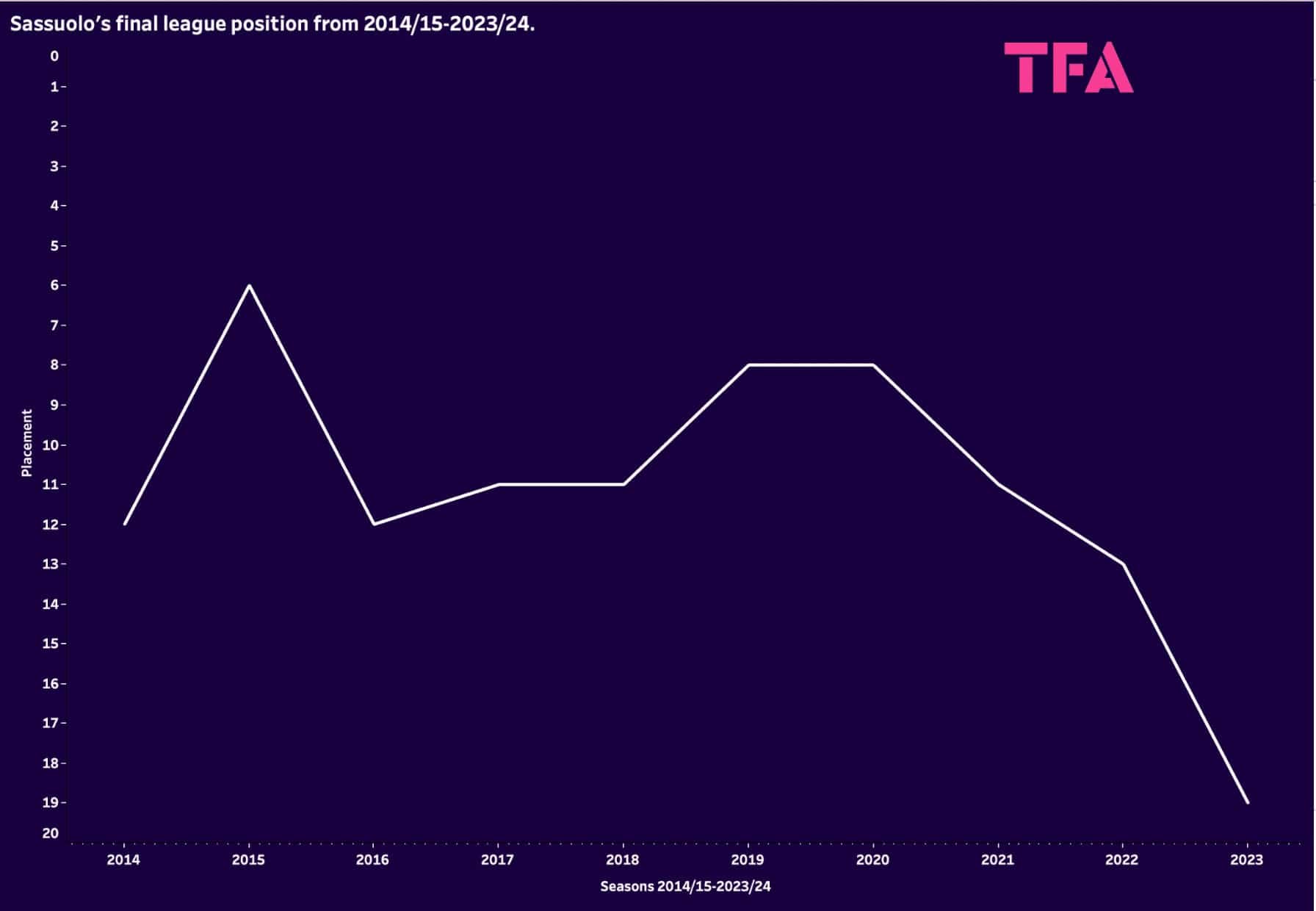
Figure 1 shows us Sassuolo’s final league position from 2014/15 to 2023/24 — the last 10 seasons.
As already mentioned, Rossi was not part of Sassuolo’s setup for 2017/18, but the Sporting Director position tends to be one which is best evaluated by long-term results, as opposed to a short-term view.
After their first Serie A season (2013/14 — not on this graph), when they finished 17th, narrowly avoiding relegation, Sassuolo placed themselves in a comfortable position in Serie A’s mid-table, hovering between a low of 12th and a high of sixth from 2014/15 until 2021/22 — a position that’s not to be scoffed at for a club who’d never competed in the top-flight before this impressive decade-long run.
A 13th-place finish in 2022/23 was followed by their eventual relegation this past term when they ended the campaign in 19th place.
However, for much of the last 10 years, it’s clear that not only did Sassuolo manage to stay in the top flight, but they did so comfortably without a real threat of being relegated — a credit to all involved in the management structure of the club as well as the first team, including Rossi who was one of the central figures in orchestrating this immense success relative to the size and history of the club.
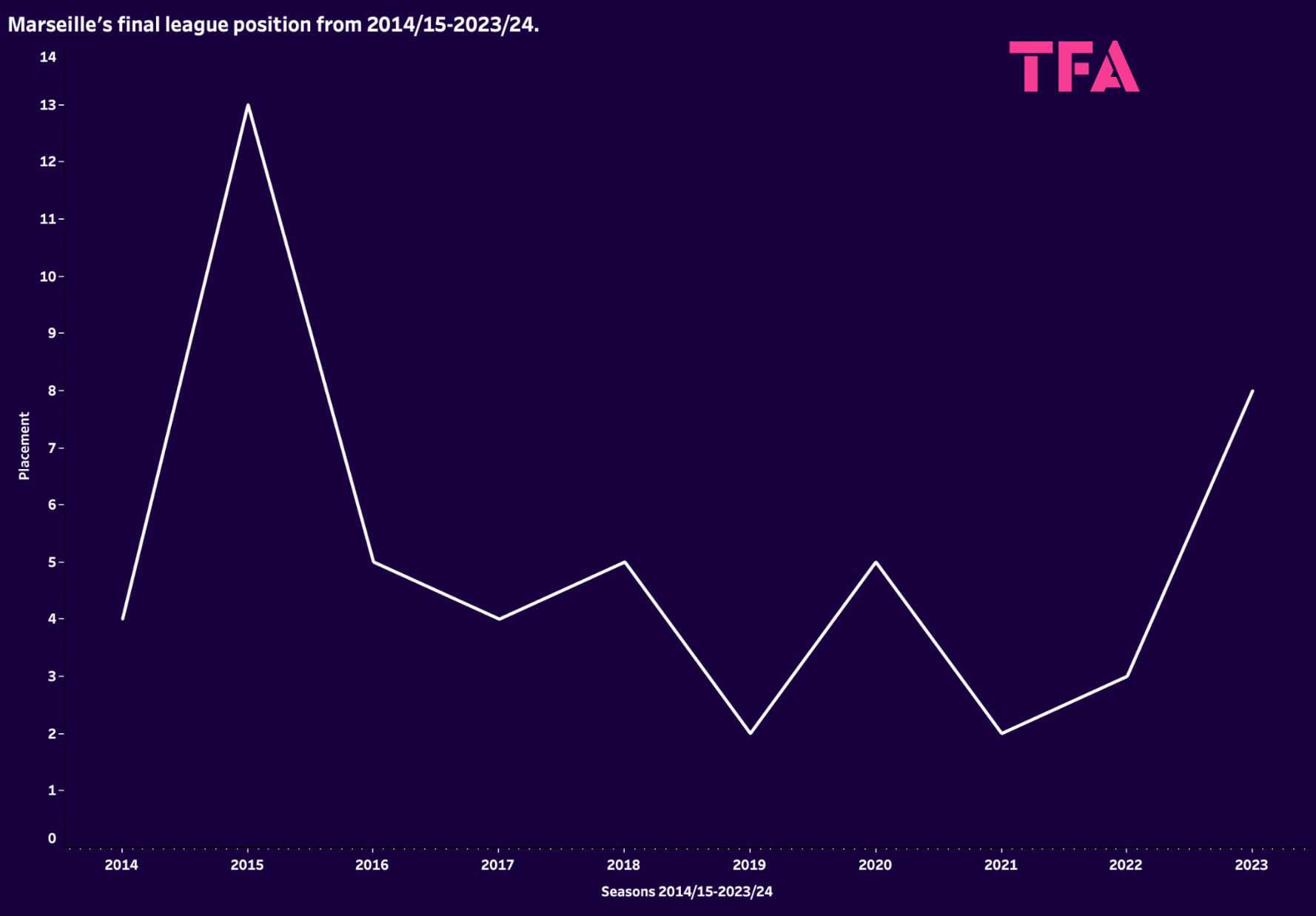
Marseille are a side who will have very different demands to those Rossi will have experienced at Sassuolo; they’ll want to be getting regular UEFA Champions League football — European football in general, at a minimum.
Over the last 10 years, they’ve typically managed to achieve the latter bar, the odd outlier, but managing the former consistently has eluded them, as figure 2 indicates.
During the timeframe shown above, Marseille qualified for the UEFA Champions League in just two seasons — 2019/20 and 2021/22, the two campaigns of the past 10 years in which they finished second in France’s top-flight.
Realistically, competing on merit with the might of PSG in their current form would be quite a tall task, but establishing themselves as ‘the best of the rest’ in France is definitely doable, even in a highly competitive league which features several well-run teams on the same level and with the same goal as Marseille at this moment.
Albeit not an easy task, this is undoubtedly what Les Phocéens have to be striving for and what they’re hoping for with their restructuring on the management side of things, bringing in Rossi and De Zerbi.
Manager ID, development and relationships
An essential skill of Sassuolo’s over the past 10 years has been their ability to effectively identify managers to take the club forward while maintaining the first team’s playing style and tactical identity.
After Roberto De Zerbi came Alessio Dionisi, and while things ultimately took a turn for the worst towards the end of his reign, things remained fairly stylistically consistent, which one could argue is a positive for the club in terms of building a culture that everyone involved with the team can clearly identify, understand and buy into.
A team characteristic of both De Zerbi and Dionisi thrives in possession, with quite a structured system on the ball, while requiring a lot of rotation and movement from individuals within that structure to aid ball progression and chance creation.
We analysed both iterations of Sassuolo — De Zerbi’s and Dionisi’s — in detail at certain points during their respective tenures in charge of the club in previous tactical analysis articles and noted in those analyses a degree of consistency between the respective visions of the two coaches.
Now, Fabio Grosso will take on the task of achieving a second promotion from Serie B to Serie A in his management career as he assumes the Sassuolo hot seat from this coming season.
Grosso is another coach who we’ve analysed in detail before at Total Football Analysis.
In that piece, we described his team as playing with elements of the positional play philosophy, though with individuals afforded greater levels of freedom than they’d be granted within the traditional positional play philosophy.
Verticality, width and depth are all emphasised within Grosso’s ideal game model, in addition to positional flexibility and off-the-ball movement from players as his side attacks — while not a carbon copy of the coaches who came into Sassuolo before him (nor should he be expected to), he does present the profile of coach who can offer an element of stylistic consistency for the Sassuolo faithful and what they’ve come to expect from their side over the last decade or so.
This stylistic consistency is something that only those above the manager involved in organising the coaching staff and all aspects of the club as a whole can ensure — this is something Rossi would’ve been central to throughout his time with Neroverdi.
His ability to achieve this successfully with a club like Sassuolo where all the options in the world won’t be readily presenting themselves, along with maintain a good working relationship with the coaches who’ve passed through the club — as his relationship with Allegri and link-up with De Zerbi once more would attest to — is vital when it comes to understanding the respect he commands thanks to his time with Neroverdi.
Transfer approach
For our final section of this analysis, we’re going to provide some analysis of Sassuolo’s transfers from the past decade to give some insight into Rossi’s transfer dealing trends.
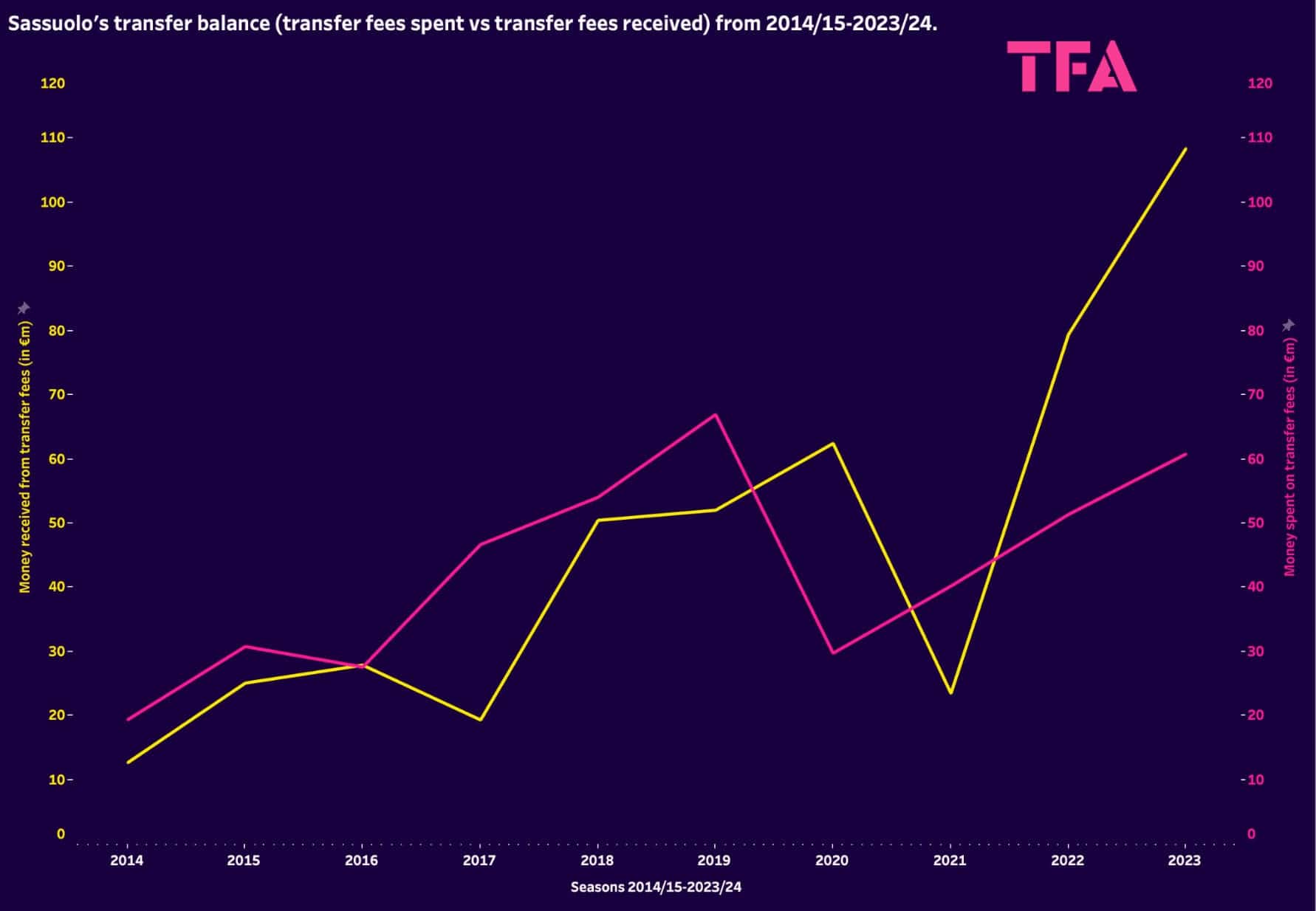
For starters, figure 3 shares Sassuolo’s transfer activity from the 2014/15 season to the 2023/24 campaign, illustrated through transfer fees spent (pink) and received (yellow).
Overall, we can clearly see that both figures have risen significantly over the last decade, with money on transfer expenditure rising slightly less than money received through player sales by the end of this graph.
For most of the years on display, both figures are in or around the same spot, with a slight variation from year to year, and both figures alternate between the largest and lowest of the two.
However, Sassuolo did spend more money than they received in the majority of years on display here — illustrating that the club was not afraid to invest in their playing squad and saw this as a necessity when it came to achieving their goal of sustaining top-flight status.
This is, perhaps, one key reason why the likes of Allegri and De Zerbi would be pleased to work with Rossi again, knowing he’s a sporting director who prioritises investment in the first-team squad.
Still, towards the end of this graph, we see player sales figures rocketing to new heights while expenditure experienced a slower, steadier rise.
It’s primarily due to these last two years that Neroverdi ended up with a €33.7m transfer profit for this period despite investing heavily in the playing squad and making a loss most of the time, taking things on a year-to-year basis.
The discrepancy between the two figures in favour of ‘money in’ over the last couple of years may be one key reason why they ultimately went through their relegation last season, with Sassuolo arguably failing to adequately replace Davide Frattesi, who departed on loan to Inter last July — meaning a significant chunk of their midfield had been taken out, in addition to the departures of the likes of Gianluca Scamacca, Manuel Locatelli and Giacomo Raspadori which came in the preceding years and perhaps finally caught up to them.
It’d be unfair to criticise Sassuolo’s recruitment, given they signed so many players who went on to deliver big-time for the club on the pitch before leaving and generating a big transfer profit.
However, over the last couple of seasons, they failed to sign players who delivered an instant hit of quality to make up for the on-field losses experienced through the aforementioned departures — this makes their increased transfer profits over the last couple of years particularly notable.
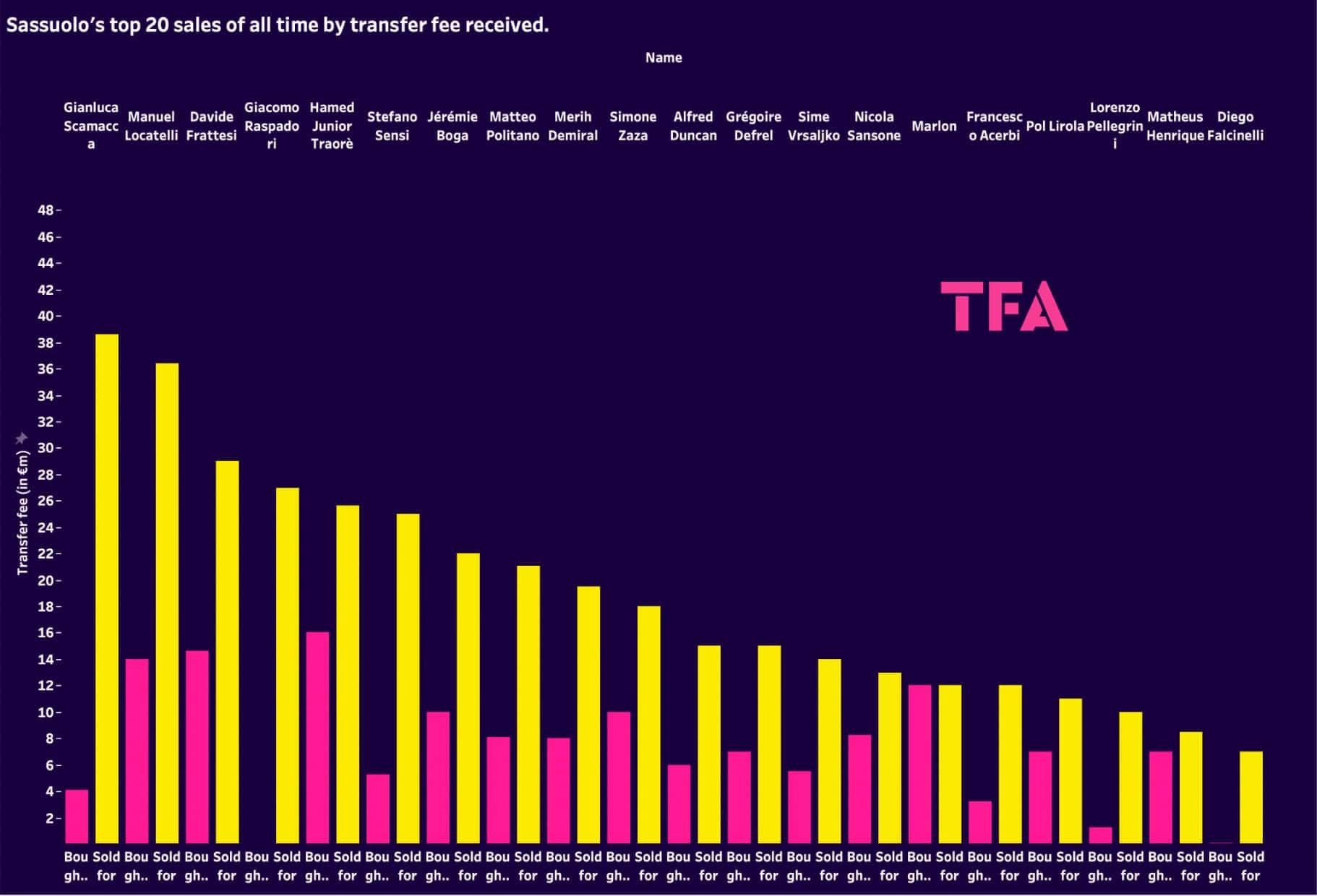
Still, over the last decade, during the vast majority of which time Rossi was a central figure in the club’s transfer activity, Sassuolo made heavy profits on a lot of players, with Scamacca to West Ham United being the club’s all-time record sale (€38.6m) after having been signed for €4.1m from PSV’s youth academy five years prior.
Figure 4 shows Sassuolo’s top-20 sales ranked in order of transfer fee received (yellow) with the transfer fee they’d initially paid to bring that player in displayed by the pink bar directly to the left of each yellow one.
Of those listed in their top-20 sales, 19 were profitable, with the club breaking even on just one player — Marlon.
One of these 20 is a Sassuolo academy product.
At the same time, six — including Scamacca — were signed from other clubs’ youth academies rather than first teams, primarily Italian academies.
11 of these players came to Sassuolo from other Italian sides’ first-teams, highlighting Rossi’s desire to ensure his team has an excellent knowledge of and ability to make use of what’s on their doorstep.
From those who came to Sassuolo from foreign countries, a notable trend seems to be a desire to sign players who either didn’t make a strong enough impact at a big club abroad but still had the potential to make it at the level of a top-five league (Marlon, signed from Barcelona) or players from some of Europe’s top youth academies, which Rossi also seemed to place a strong emphasis on being knowledgeable about (see: Jérémie Boga, signed from Chelsea’s youth team and Scamacca, signed from PSV’s youth team).
Between their arrival at Mapei Stadium – Città del Tricolore for Neroverdi and their ultimate departures, some of these players went out on several loan spells, including Diego Falcinelli, Fratessi and Scamacca.
This is not just talking about a loan before the buying club made a purchase.
Still, rather loan spells to gain experience and improve before featuring for Sassuolo’s first team and/or being sold on for a larger fee.
However, ‘loan with buy option’ deals were also quite common for both Sassuolo’s incomings and outgoings during this period.
Conclusion
To conclude our analysis, Rossi could end up being a key player when it comes to managing De Zerbi at Marseille, thanks to his existing relationship with the coach and knowledge of how he likes to operate, potentially providing the 45-year-old manager with the environment he needs to deliver the on-field success Marseille will hope to see during his tenure.
Should Rossi get involved in transfers with Les Phocéens as well, he’ll offer a lot of connections, especially to the Italian market but also to top clubs and their youth academies around Europe with whom he’s done plenty of deals in the past, leading to successful returns for his club.
During his time at Sassuolo, Rossi exhibited a tendency to place a lot of trust in the manager through investment in the first team in terms of signings — this was largely repaid through positive performances on the pitch, good management of the players and, ultimately, a return for the club.
All this led to a healthy 10-year period of top-flight football for Sassuolo — not a bad first crack at Serie A for the century-old club.
Rossi played a pivotal role in a club elevating itself to new heights and Marseille will hope he can repeat that success in a different way while at Stade Vélodrome.

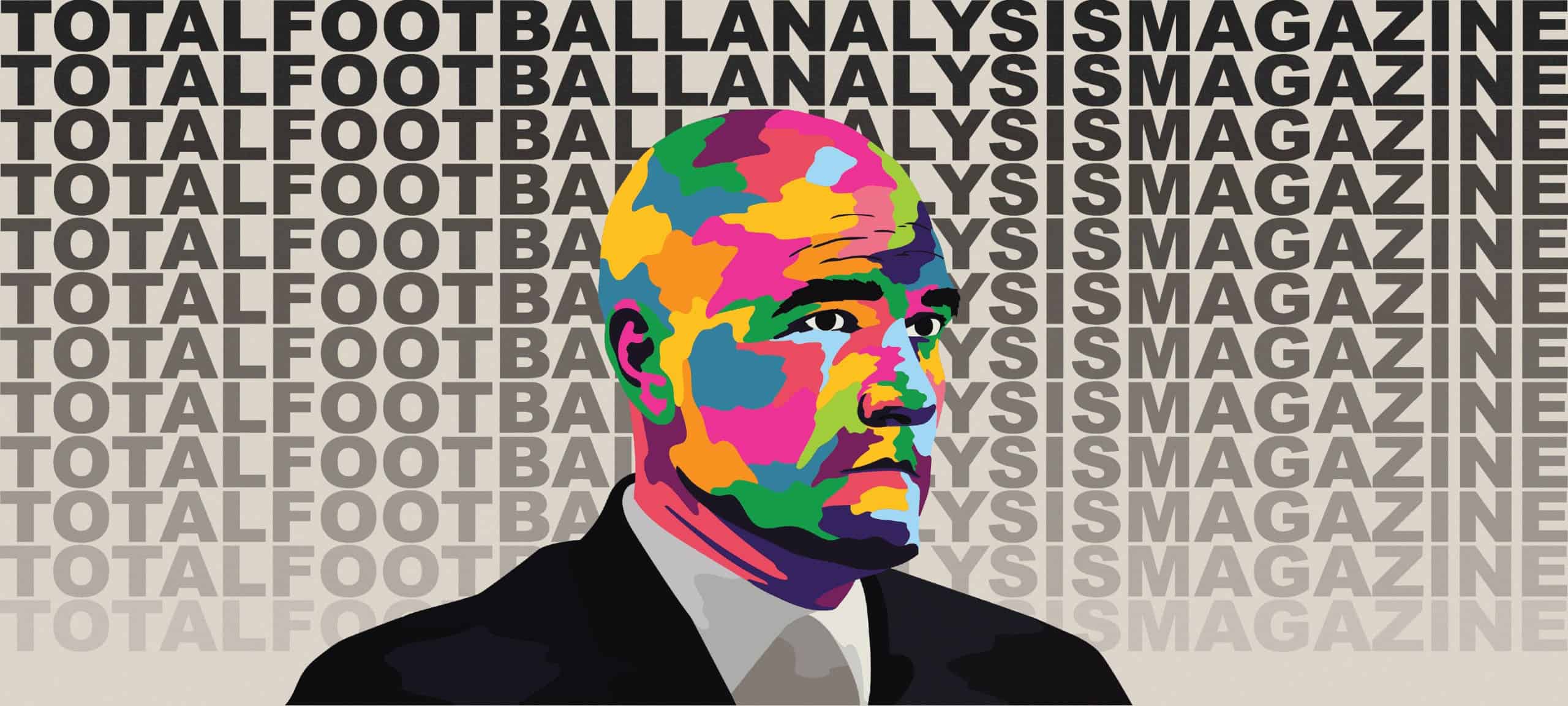



Comments